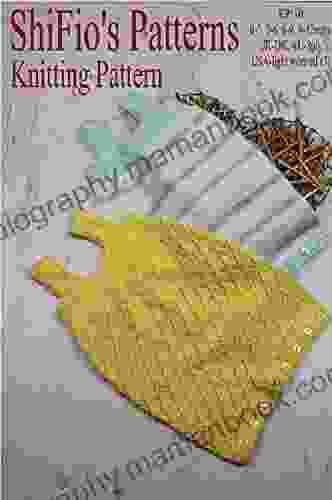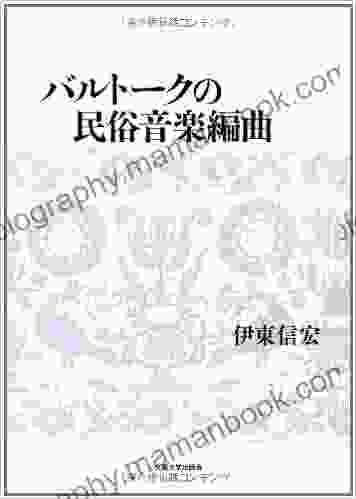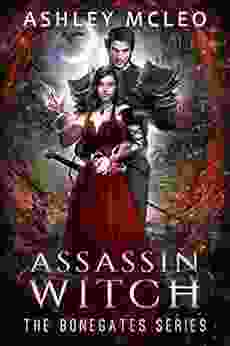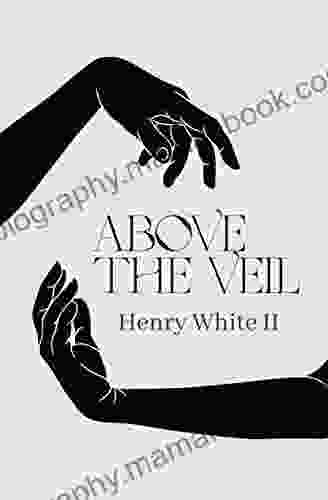Beauty In Changing Form: Exploring the Evolution of Beauty Standards

Beauty, an elusive and subjective concept, has been a constant pursuit throughout human history. It is a reflection of our cultural values, societal norms, and the ever-evolving perceptions of what is considered aesthetically pleasing. From the ancient sculptures of Aphrodite to the modern-day obsession with social media influencers, beauty standards have undergone a remarkable transformation, revealing the malleable nature of our ideals.
4.7 out of 5
| Language | : | English |
| File size | : | 442 KB |
| Text-to-Speech | : | Enabled |
| Screen Reader | : | Supported |
| Enhanced typesetting | : | Enabled |
| Word Wise | : | Enabled |
| Print length | : | 66 pages |
| Lending | : | Enabled |
Ancient Beauty Ideals
In ancient Greece, beauty was synonymous with symmetry, harmony, and physical perfection. The concept of "kalokagathia," meaning "the good and the beautiful," emphasized the importance of both physical and moral attributes. Statues like the Venus de Milo epitomized these ideals, showcasing idealized proportions, flawless features, and a serene expression.
Ancient Egypt placed great emphasis on skincare, cosmetics, and personal grooming. Egyptians used kohl to accentuate their eyes, henna to dye their hair, and fragrant oils for bathing. The iconic bust of Nefertiti, with its elongated neck, almond-shaped eyes, and full lips, represents the beauty standards of the time.
Medieval Beauty: Grace and Modesty
The Middle Ages witnessed a shift towards a more modest and spiritual concept of beauty. Christian beliefs influenced ideals, with an emphasis on inner purity and chastity. Women were depicted as graceful and virtuous, with long, flowing hair, pale skin, and modest clothing.
Renaissance: The Revival of Classical Beauty
The Renaissance brought about a revival of interest in classical art and culture. Beauty once again became associated with symmetry, proportion, and idealized human forms. Leonardo da Vinci's "Mona Lisa," with its enigmatic smile and subtle curves, became a timeless representation of Renaissance beauty.
Victorian Era: Feminine Frailty and Elaborate Fashion
The Victorian era ushered in a new set of beauty standards that emphasized feminine frailty and elaborate fashion. Women were expected to have a tiny waist, fair skin, and delicate features. Corsets were widely used to achieve the desired hourglass figure, while elaborate hairstyles and ornate clothing became symbols of status and beauty.
20th Century: Modernism and the Flappers
The early 20th century saw a significant shift in beauty ideals, with the rise of modernism and the flapper movement. Women began to embrace androgyny, bobbed their hair, and wore loose-fitting clothing. Flappers were known for their rebellious attitudes and rejection of traditional beauty norms.
Post-World War II: Hollywood Glam and the Golden Age
The post-World War II era marked the rise of Hollywood and the birth of the modern beauty industry. Actresses like Marilyn Monroe, Audrey Hepburn, and Elizabeth Taylor became style icons, inspiring women worldwide with their glamorous looks and aspirational lifestyles.
Contemporary Beauty: Diversity and Inclusivity
In recent decades, there has been a growing movement towards greater diversity and inclusivity in beauty standards. The rise of social media has given a platform to a wider range of voices, challenging traditional notions of beauty. Body positivity campaigns, anti-bullying initiatives, and the representation of people of all shapes, sizes, ethnicities, and genders have contributed to a more inclusive and accepting view of beauty.
The Impact of Beauty Standards
Beauty standards have a profound impact on our lives. They influence our self-esteem, body image, and mental health. The pursuit of idealized beauty can lead to disordered eating, excessive cosmetic procedures, and a negative body perception.
However, beauty standards can also be empowering. They can inspire us to take care of ourselves, cultivate healthy habits, and embrace our unique qualities. The key is to approach beauty with a healthy balance of appreciation and acceptance, recognizing that true beauty lies not only in our physical appearance but also in our character and the way we live our lives.
The evolution of beauty standards reveals the ever-changing nature of human perceptions. From the idealized sculptures of ancient Greece to the diverse and inclusive representations of today, beauty remains a multifaceted and captivating concept. As we continue to embrace a more inclusive and accepting society, it is our responsibility to challenge unattainable beauty standards and celebrate the beauty in all its forms.
4.7 out of 5
| Language | : | English |
| File size | : | 442 KB |
| Text-to-Speech | : | Enabled |
| Screen Reader | : | Supported |
| Enhanced typesetting | : | Enabled |
| Word Wise | : | Enabled |
| Print length | : | 66 pages |
| Lending | : | Enabled |
Do you want to contribute by writing guest posts on this blog?
Please contact us and send us a resume of previous articles that you have written.
 Top Book
Top Book Novel
Novel Fiction
Fiction Nonfiction
Nonfiction Literature
Literature Paperback
Paperback Hardcover
Hardcover E-book
E-book Audiobook
Audiobook Bestseller
Bestseller Classic
Classic Mystery
Mystery Thriller
Thriller Romance
Romance Fantasy
Fantasy Science Fiction
Science Fiction Biography
Biography Memoir
Memoir Autobiography
Autobiography Poetry
Poetry Drama
Drama Historical Fiction
Historical Fiction Self-help
Self-help Young Adult
Young Adult Childrens Books
Childrens Books Graphic Novel
Graphic Novel Anthology
Anthology Series
Series Encyclopedia
Encyclopedia Reference
Reference Guidebook
Guidebook Textbook
Textbook Workbook
Workbook Journal
Journal Diary
Diary Manuscript
Manuscript Folio
Folio Pulp Fiction
Pulp Fiction Short Stories
Short Stories Fairy Tales
Fairy Tales Fables
Fables Mythology
Mythology Philosophy
Philosophy Religion
Religion Spirituality
Spirituality Essays
Essays Critique
Critique Commentary
Commentary Glossary
Glossary Bibliography
Bibliography Index
Index Table of Contents
Table of Contents Preface
Preface Introduction
Introduction Foreword
Foreword Afterword
Afterword Appendices
Appendices Annotations
Annotations Footnotes
Footnotes Epilogue
Epilogue Prologue
Prologue Bill Lubanovic
Bill Lubanovic Timothy Johnson
Timothy Johnson Vesper Young
Vesper Young Rebecca Yarros
Rebecca Yarros Mike Mignola
Mike Mignola Percival Constantine
Percival Constantine Anna Garnet
Anna Garnet Sarah M Broom
Sarah M Broom Pietro Mascagni
Pietro Mascagni Reginald Huff
Reginald Huff Rashelle Workman
Rashelle Workman Norman Morrison
Norman Morrison Rahul Seth
Rahul Seth Jean Michel Glachant
Jean Michel Glachant Lydia Chen
Lydia Chen Marcus Clapham
Marcus Clapham Walter Hines Page
Walter Hines Page Toni H
Toni H Bea Ma
Bea Ma Jennifer R Lee
Jennifer R Lee
Light bulbAdvertise smarter! Our strategic ad space ensures maximum exposure. Reserve your spot today!

 Robert BrowningUndead Unluck Vol Katherine Faulkner: A Chilling Tale of Supernatural Action...
Robert BrowningUndead Unluck Vol Katherine Faulkner: A Chilling Tale of Supernatural Action... Leo MitchellFollow ·8.5k
Leo MitchellFollow ·8.5k Dennis HayesFollow ·8.2k
Dennis HayesFollow ·8.2k Jamison CoxFollow ·12k
Jamison CoxFollow ·12k Shaun NelsonFollow ·8.9k
Shaun NelsonFollow ·8.9k Gary ReedFollow ·12.5k
Gary ReedFollow ·12.5k Derek BellFollow ·9.5k
Derek BellFollow ·9.5k D'Angelo CarterFollow ·18.9k
D'Angelo CarterFollow ·18.9k Galen PowellFollow ·11.1k
Galen PowellFollow ·11.1k

 Barry Bryant
Barry BryantKnitting Pattern Kp190 Baby Sleeping Bags Sizes 3mths...
This easy-to-follow...

 Rudyard Kipling
Rudyard KiplingFolk Music Arrangements of Bartók: A Musical Tapestry of...
Béla Bartók, the renowned...

 Garrett Bell
Garrett BellThe Yellow House Memoir: A Literary Masterpiece that...
A Journey of Resilience,...

 George Martin
George MartinAssassin Witch Dark Faerie: The Bonegates
In the shadowy...
4.7 out of 5
| Language | : | English |
| File size | : | 442 KB |
| Text-to-Speech | : | Enabled |
| Screen Reader | : | Supported |
| Enhanced typesetting | : | Enabled |
| Word Wise | : | Enabled |
| Print length | : | 66 pages |
| Lending | : | Enabled |














